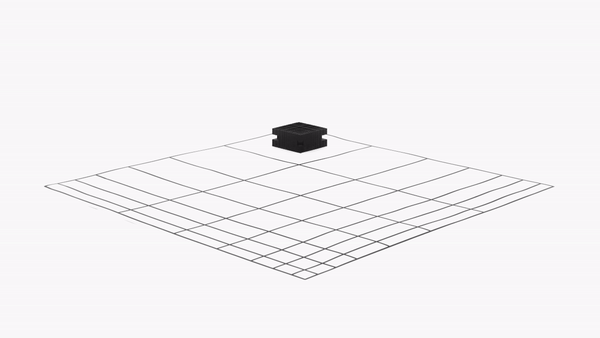At the first and most concrete level, the simulation functions as a forced perspective with subjects entering along its axis at the building entry to negotiate. Subjects proceed to a table that is a model of the building they are in (and a model of the model room they can see in front of them). On this axis, the subject is provided a flattened view of the simulation with all objects and landforms reduced to a single scale. From this perspective, the representation feels understandable, controllable and easily debated. The Table, Room, Building and Region all align as one representation. The subjects can negotiate and move their artifacts within the table, insinuating changes to take place within the room, the building and the region at large.










